QuestionHello, My Tank is almost 2 months old. About 17 fish in tank. Mostly little neons. 2 gromies died. Foating on top of tank Then 2 mollies died they had white swollen mouths.I got all levels fixed with some stuff called cycle. I put fizzy pellets in water turned it green. changed filter, tank was doing great. Last week I noticed a rust color on every thing in the tank,plastic plants, gravel, ship & Another fish died this morning. Makes me sad HELP Please. Sher
AnswerHi Sherry;
Your tank and fish have been through quite a lot of trauma due to "New Tank Syndrome". That's why some died early on and others have even died after it all seems to be better. I will include a copy of my article on new tanks at the end of this letter to help you know more about it.
The rust colored stuff is just algae. It is not harmful, just yucky looking. Your tank can't grow the green type of algae yet since it is so new and not balanced so the 'easy to grow' brown stuff takes hold instead. Brown algae doesn't need much light and likes new tank syndrome (or break-in period) because of all the toxins that rise during that time. Just wipe it off during your next regular water change. Water changes of 25% should be made every week while vacuuming the gravel. Use just a regular water conditioner. No other additives are needed. It's always best to treat fish and aquarium problems naturally with good maintenance instead of chemicals or medicines.
**********
New Tank Syndrome or Break-in Period
So you have a new tank and you filled it up, put the filter together, mounted the heater into place and turned on the lights. You have all the plants and decorations where you want them....
You are ready for fish.
But, your filter is not ready for a full tank of fish yet.
The filter is running and moving the water and cleaning out crud, right? Of course!
But a very important part of your filter is the part you can't see. An aquarium filter removes the larger visible stuff, but it also must remove the dissolved fish waste that turns into ammonia in the water. To do this, special bacteria must grow in the filter system and on the particles of gravel in the bottom of your tank. This process occurs even on a limited scale in little fish bowls that have no filter in them.
This is "New-Tank Syndrome" or the "Break-in Period". The entire process takes 6 to 8 weeks to complete because these "nitrifying" bacteria grow quite slowly.
Start off with only one or two hardy fish (no more than 2 total inches of fish) for every ten gallons of water and don't add more until the 6 to 8 weeks has gone by. Hard to be patient, but it is worth it to keep your fish alive and healthy. As a matter of fact, the bacteria cannot develop without fish in the tank. You can let that tank sit forever without fish in it, but as soon as the first fish goes in the process begins. Avoid changing the filter pads during break-in. This removes the bacterial colonies that are essential to a balanced aquarium. You can rinse the filter pad out in a container of aquarium water. This will preserve most of the bacteria colonies while still allowing your filter to flow freely. Even using bacteria additives and water conditioners when you first set up the tank will not make a tank begin the cycle by itself. If there are no fish to provide food (fish waste) for the bacteria, the beneficial bacteria cultures will die and you will have to start the colonies all over again once fish are added to the tank. Once the tank has completed the initial cycle, you can change the filter pads every 4 weeks or so. But for now, just rinse them.
Feed your new fish VERY lightly. Any excess food will cause additional waste your system cannot afford to have right now. If you see food floating around or lying on the plants and gravel after five minutes, too much food is going into the tank. Cut back a little each time you feed until it is ALL gone 5 minutes after you feed them. Feed them once a day.
During this "break-in period" your tank will become cloudy and milky looking. You may have to tolerate this for the entire break-in period but it is only temporary. Changing 25% of the water three times a week until the break-in period is over helps a great deal. Changing water reduces the ammonia and nitrites that rise while the bacteria continues to multiply. If ammonia and/or nitrites become too high, your fish will become stressed and possibly die. Use a good water conditioner when you replace the water and make sure it is the right temperature to avoid shocking your fish.
When the break-in is over after 6 to 8 weeks and there are no nitrites or ammonia present in the water you can slowly add more fish. Add one or two every week until you reach the desired population. This allows the bacteria to adjust to the new population every time before adding more. Monitor the nitrites and ammonia to be sure they don't come up. If they do, make a 25% water change and check them again. Don't add the next fish until the levels are down again.
The safe maximum population for any size tank is one inch of adult fish for every gallon of water in the tank. Do some research to be sure of the fish you are interested in. Even though they are small when you buy them, you have to base your population calculations on full-sized adult fish. Many hobbyists have up to two inches per gallon but this can be risky. If a water quality issue arises or a disease occurs it will spread fast and furious in an over-populated tank. In any case, 25% water changes every week to two weeks are absolutely essential for the health of your fish.
Following these guidelines will help you get your new tank on the right track.
**********
Followups welcome
At Your Service;
Chris Robbins
Come on over and join us on the freshwater fish forum at About.com to get even more information too;
http://freshaquarium.about.com/od/questionsanswers/a/naavigateforum.htm
My member name is ChrisR62. See You There!

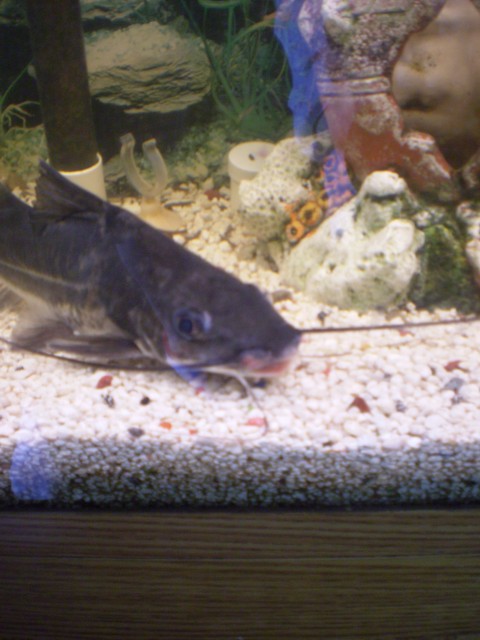 feeler rot / air gulping
QuestionRamona
QUESTION: Hi, I submitted this sa
feeler rot / air gulping
QuestionRamona
QUESTION: Hi, I submitted this sa
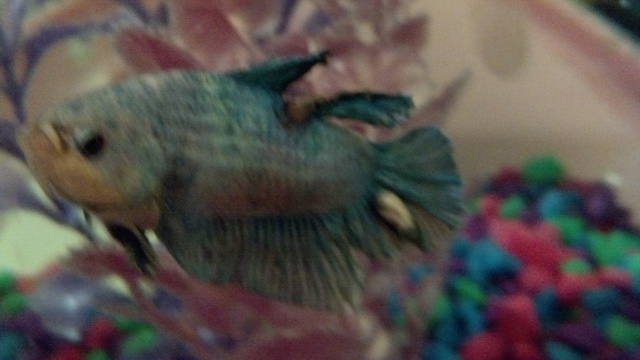 Beta fin body rot
Question
George
My beta is in a1 gallon glass fi
Beta fin body rot
Question
George
My beta is in a1 gallon glass fi
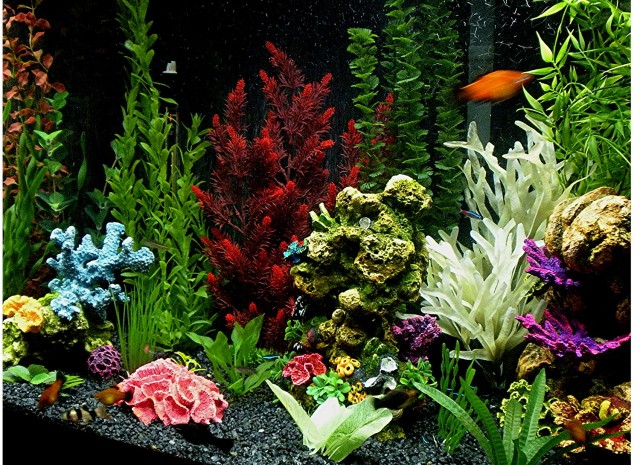 Upgrading my tank, want advice..
QuestionQUESTION: Hello April,
I got my first fish a c
Upgrading my tank, want advice..
QuestionQUESTION: Hello April,
I got my first fish a c
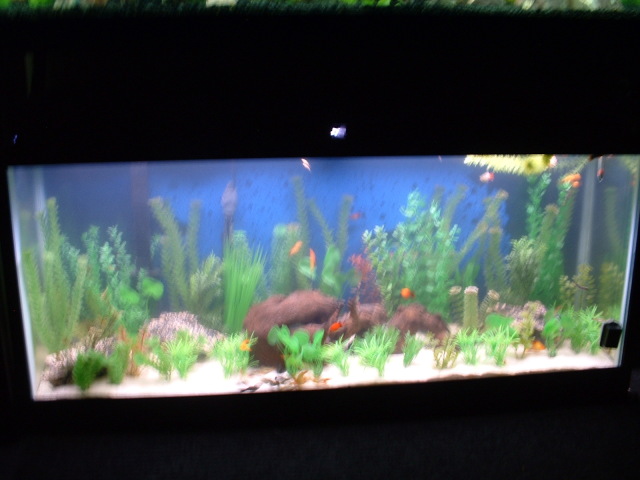 is it TB?
Question
55 galon aquarium
Hi,
I have a 55 gallon fw ta
is it TB?
Question
55 galon aquarium
Hi,
I have a 55 gallon fw ta
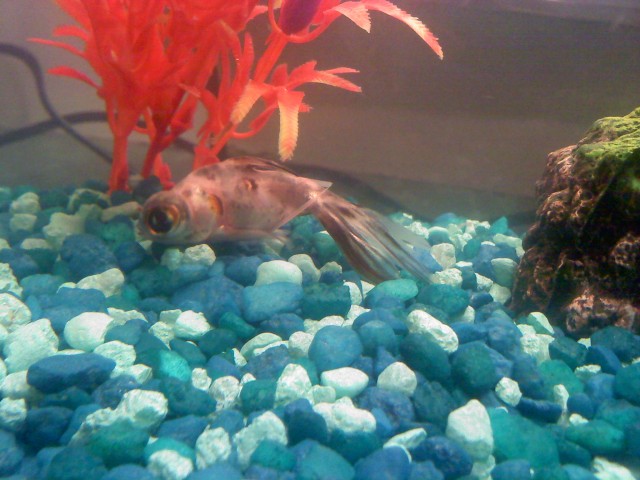 Goldfish On Bottom Of Tank
Question
Patches on the bottom
Hi.
I have two goldfish,
Goldfish On Bottom Of Tank
Question
Patches on the bottom
Hi.
I have two goldfish,